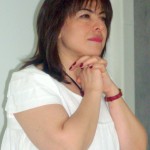One of my trainers, Sheelagh Deller who taught me so much once said:
 ‘There are three types of lessons:
‘There are three types of lessons:
- 1. The lesson you planned.
- 2. The actual lesson that you have executed.
- 3. The lesson you would have given.’
Some teachers spend time on the lesson, and think about it when the lesson is over. These teachers can be described as teachers who ave begun to be Reflective teachers. What do reflective teachers do? They recall an activity or process, they consider it thoroughly and they evaluate it. Following that they make a decision and conduct an action plan. Only then, the reflection on the lesson when it is over becomes meaningful. Otherwise just thinking about it, and not doing anything about would not be productive. As Joel A. Barker says;
‘Vision without action is merely a dream.
Action without a vision is just passing time.
Vision with action can change the world.’
In my previous blog post, I wrote about Wallace’s (1991) Craft Model and Applied Science Model in teacher training. As a third model, Wallace suggests Reflective Model. In the Reflective Model teachers apply the received knowledge, i.e. methods and techniques that they acquire during their training and have the chance to develop an understanding of actual teaching where they gain the experiential knowledge. You can find an analysis of all three of these models with pros and cons in Tanvir’s Blog.
Wallace’s Reflective Model (learning derived from reflection on practice), corresponds with “teacher development.” It can be represented through the model of experiential learning provided by Kolb (1984). (Ur, 1997) Figure 1 shows the cycle.
The teacher is much more active in this model (compared to the other two models). The teacher applies what s/he learned, reflects on the experience, thinks through the experience, implements a new or adapted approach based on the conceptualisation of the initial experience and goes to the classroom and experiments his/her new plan which leads itself to repeat the whole circle one more time.
In the Reflective Model what the teacher experiences seems to be the only way to learn. In other words, the teacher happens to experience something in his/her class, and bases his/her actions on what s/he experiences. It appears that the teacher ignores the other sources of information and knowledge in the field that s/he could make use of. Taken to an extreme, it implies that the incoming teacher has to “reinvent the wheel” on their own (Ur, 1997).
So what is the best model? This is the next blog topic:)
Reference
Ur, P. (1997). Teacher Training and Teacher Development: A Useful Dichotomy? JALT Publications, The Language Teacher Online, 19 October 1997
Wallace, M.J. (1991). Training foreign language teachers: A reflective approach. Cambridge: Cambridge University Press.



I concur with Wallace when he says that there are two major forces in teacher training and teacher education: Collegiality and Reflection. It is sharing with colleagues and reflecting on one’s own practice that we can become better practitioners. Someone said that “There is nothing better than a good theory put to practice” and I would add, “and on which there has been sharing and reflection”.